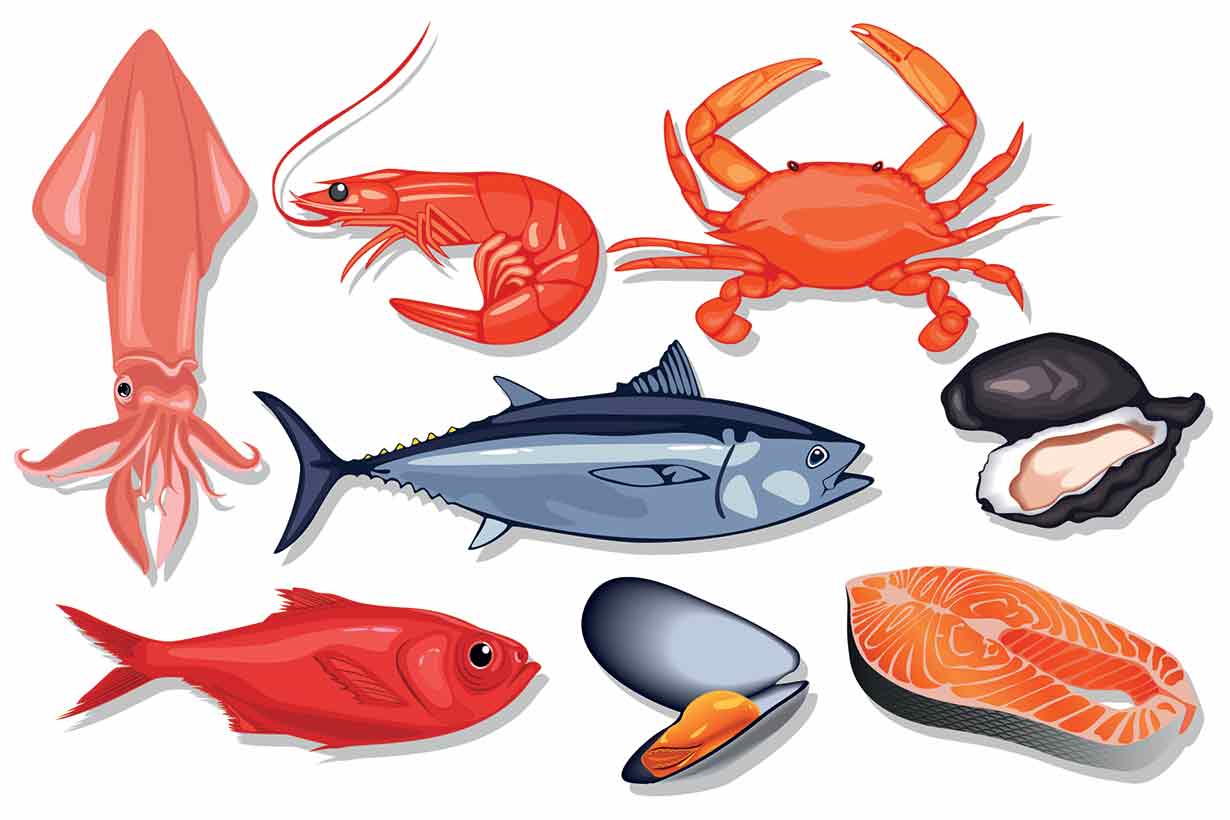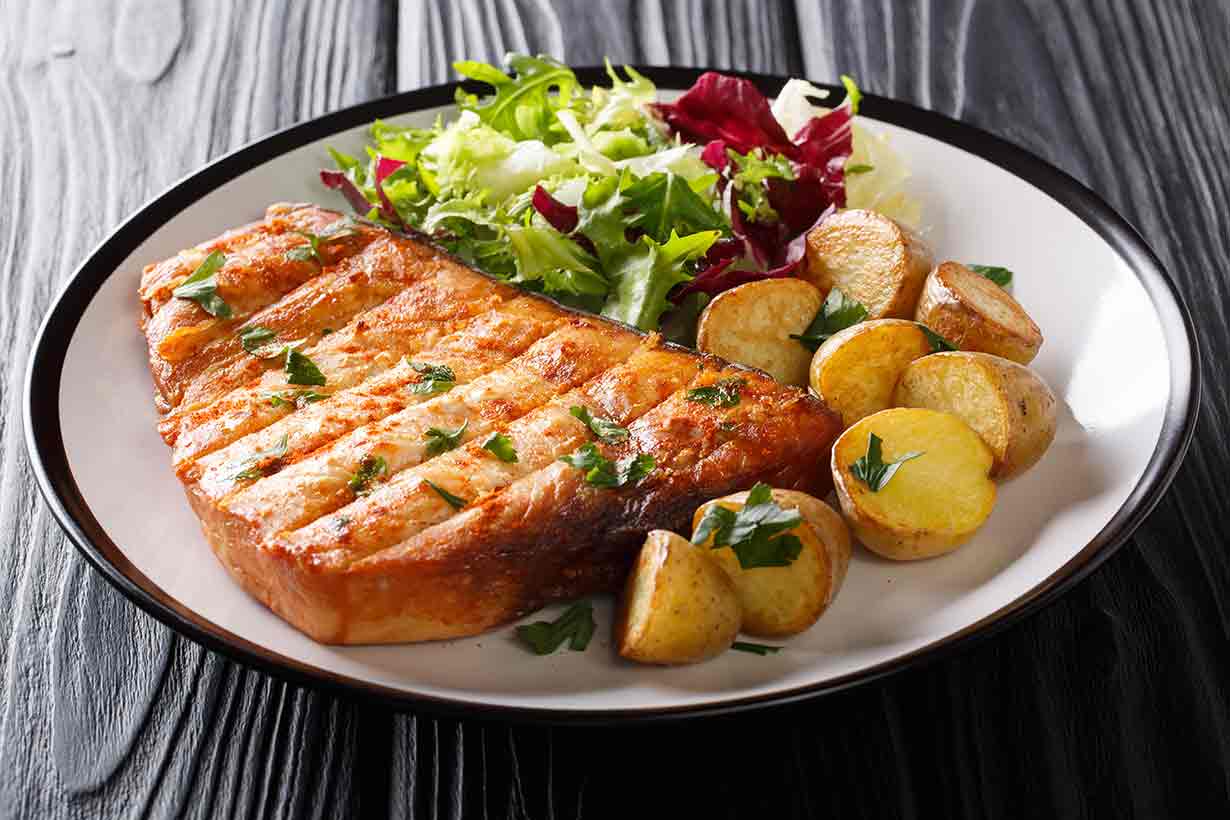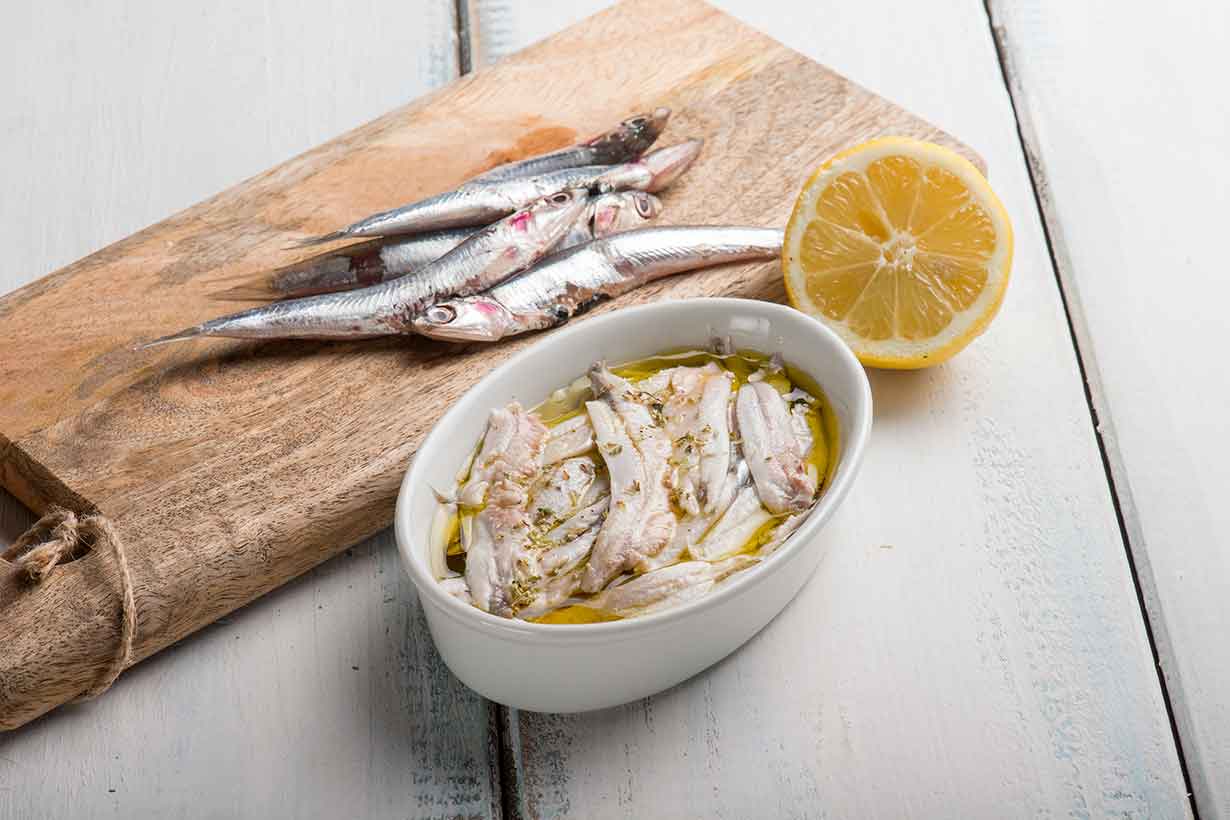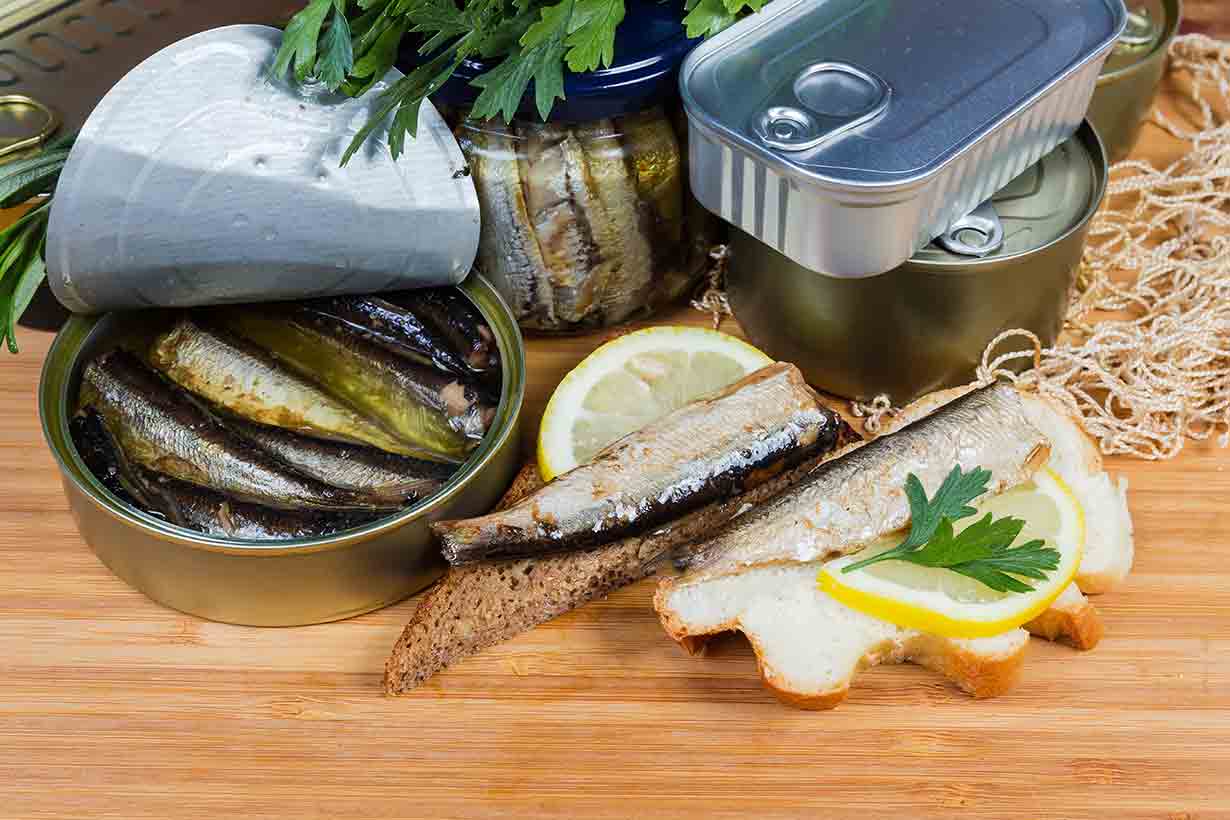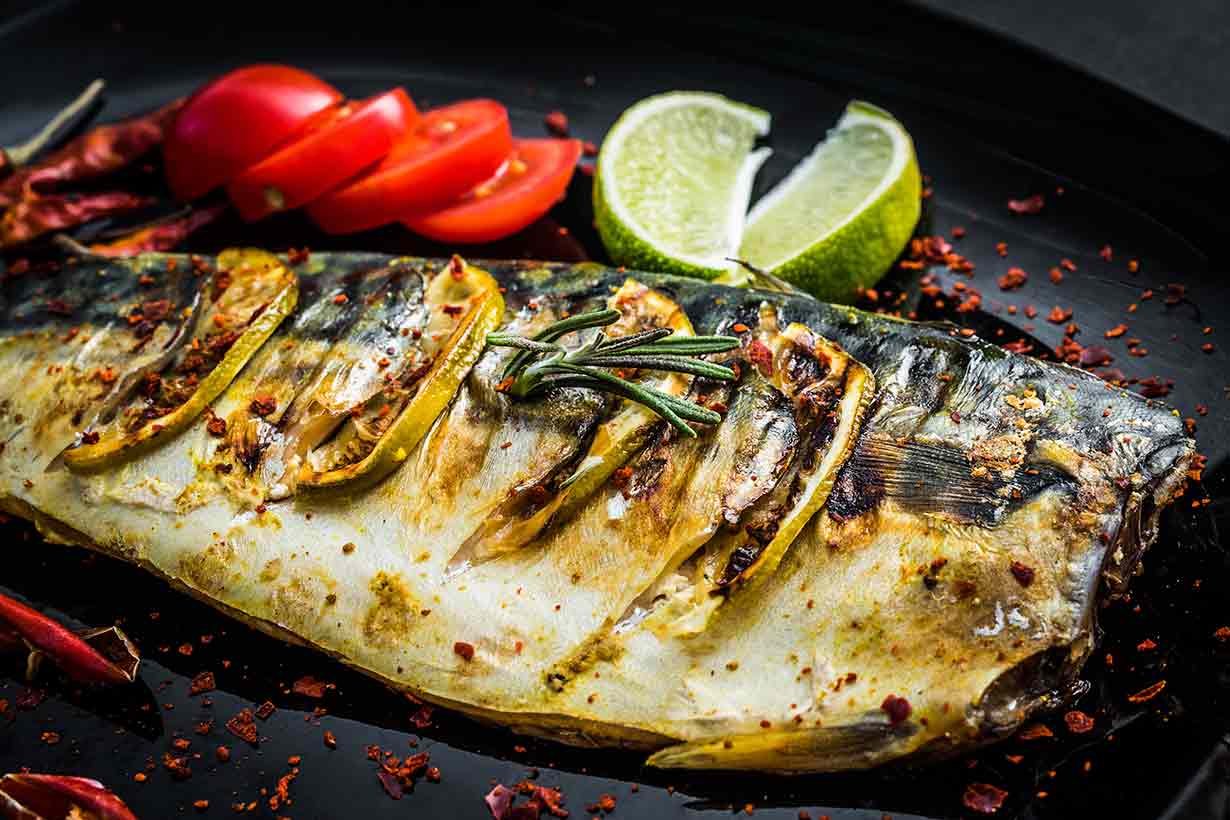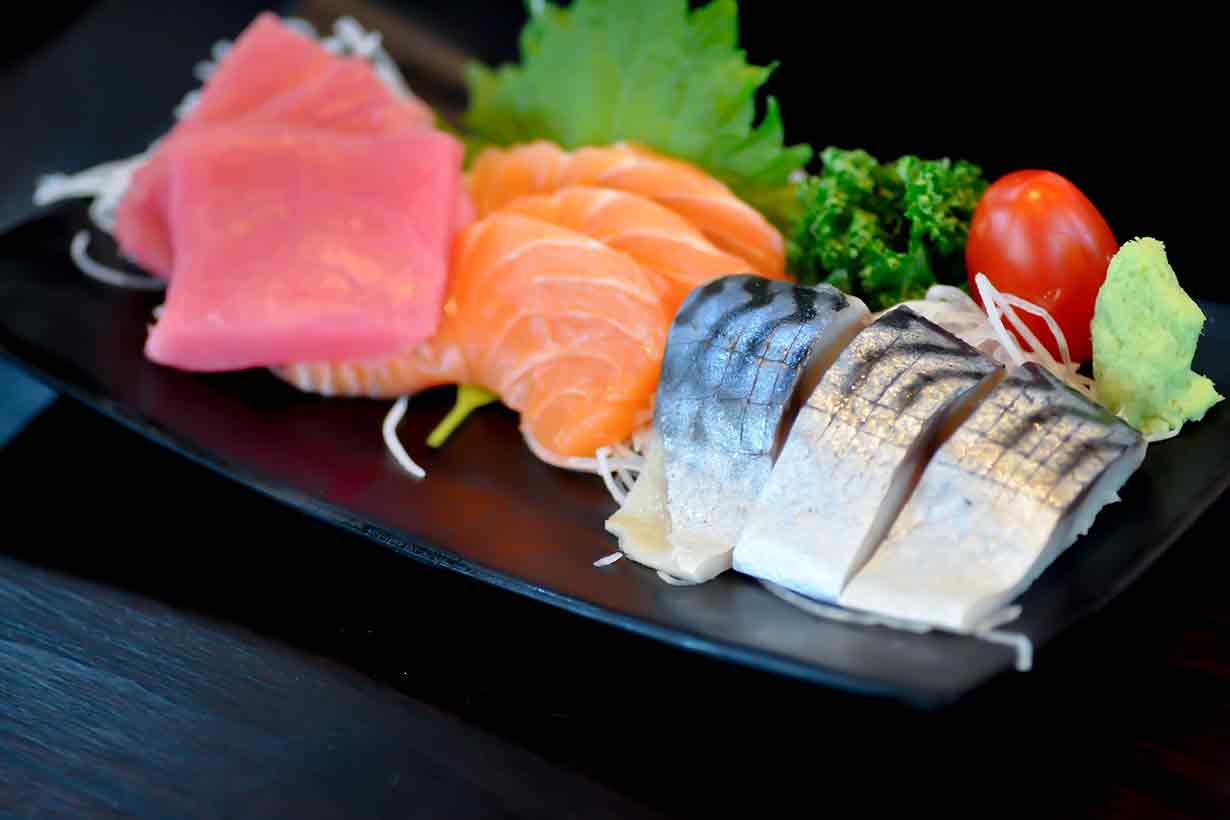The eel is a long fish that can grow up to several meters in length.
It has a snake-like appearance, and it is a popular type of seafood, particularly in Japan and other East Asian countries.
Eel has several nutritional benefits, but there are also some potential downsides to consider.
This article takes a balanced look at eel, its nutritional values, benefits, and drawbacks.
What Is Eel?
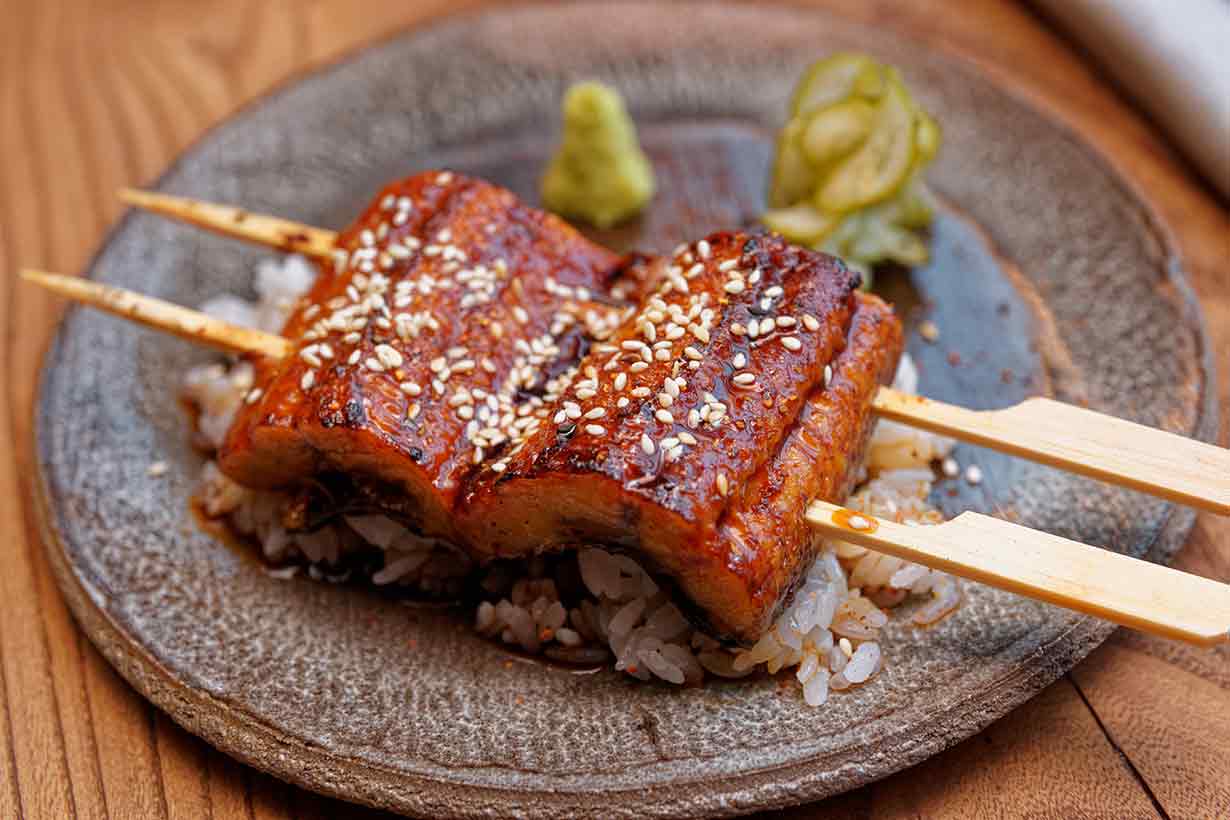
The eel was once a common food item in the Western world due to its affordability and nutritional value.
However, in recent times, declining reserves and sustainability concerns have decreased the availability (and increased the price) of the fish. For instance, eel reserves have fallen by approximately 5% per year for more than fifty years (1, 2).
Despite this, efforts are underway to improve the sustainability of the fish, which we will examine later.
Eel is used around the world in many different ways, and it features in everything from grilled dishes to sushi.
Four countries are responsible for the majority of global eel production: China, Japan, Korea, and Taiwan. Japan is the predominant global producer (3).
There are two primary varieties of eel:
- Freshwater eel: tends to live alongside the coast, in rivers, and lakes. For those familiar with Japanese cuisine, this variety is known as ‘unagi’ (4).
- Saltwater eel: this variety lives in ocean water, and it is also known by the Japanese name of ‘anago.’
This article will focus on freshwater eel, which is the more prevalent and popular of the two.
Nutrition Facts
Based on the USDA’s FoodData Central database and the FDA’s published daily values, here is the nutritional profile of freshwater eel (5, 6).
| Name | Amount | % Daily Value |
|---|---|---|
| Calories | 236 kcal | 12% |
| Carbohydrates | 0 g | 0% |
| Fiber | 0 g | 0% |
| Sugars | 0 g | |
| Fat | 15.0 g | 23% |
| Saturated | 3.0 g | 15% |
| Monounsaturated | 9.2 g | |
| Polyunsaturated | 1.2 g | |
| Omega-3 | 838 mg | |
| Omega-6 | 251 mg | |
| Protein | 23.7 g | 47% |
Vitamins
- Vitamin A: 126% of the daily value
- Vitamin B12: 120% DV
- Vitamin D: 53% of the daily value
- Vitamin E: 34% DV
- Niacin (B3): 28% DV
- Thiamin (B1): 15% DV
- Choline: 12% DV
- Pantothenic acid (B5): 6% DV
- Vitamin B6: 5% DV
- Folate: 4% DV
- Riboflavin (B2): 4% DV
- Vitamin K: 1% DV
Minerals
- Phosphorus: 22% DV
- Zinc: 19% DV
- Selenium: 15% DV
- Potassium: 7% DV
- Magnesium: 6% DV
- Iron: 4% DV
- Copper: 3% DV
- Sodium: 3% DV
- Calcium: 2% DV
- Manganese: 2% DV
Benefits
The main benefits of eel relate to the nutrients it contains and also what it doesn’t contain.
An Excellent Source of Vitamins A, D, and B12
As shown in the nutritional values, 100 grams of eel provides more than 100% of the daily value for vitamin A and vitamin B12 (5, 6).
These vitamins are important for eye health, energy production, optimal immune function, and many other functions (7, 8, 9).
Additionally, the fish is a rare dietary source of vitamin D and provides more than half of the daily value per 100 grams (5, 6).
While we call it a ‘vitamin,’ vitamin D acts as a hormone in the body, and all cells require it. Among its many functions, vitamin D is critically important for immune health and the skeletal system (10).
Eel Has Low Mercury Levels
Over recent years, the potential dangers of heavy metal contamination—particularly mercury— have become a significant concern about seafood (11, 12).
On the positive side, tests have demonstrated that eel has one of the lowest mercury levels of all seafood.
In one study, fifty-two samples of eel flesh were analyzed for their mercury content. The mean mercury content across these samples was 0.085 ppm, which is much lower than popular seafood choices like cod and canned tuna (13, 14).
Further to this, the following organizations all class eel as fish with low mercury levels (15, 16, 17):
- American Pregnancy Association
- Environmental Defense Fund
- National Resources Defense Council
A Source of Omega-3
Generally speaking, most of us could do with increasing our intake of omega-3 fatty acids.
These essential fatty acids are vital for our health, yet most people do not consume sufficient amounts.
The Dietary Guidelines For Americans advises that consuming EPA and DHA omega-3 is associated with reduced risk of cardiovascular disease (18).
Despite this, dietary intake data from the National Health and Nutrition Examination Survey (NHANES) shows that Americans are not meeting omega-3 recommendations (19).
On this note, eel offers a good amount of omega-3 (5):
- 838 mg omega-3 per 100-gram serving
- 1,333 mg omega-3 per fillet of eel
Note: for those who are explicitly looking for more omega-3, there are better sources.
For example, sardines offer 1480 mg of omega-3 per 100 grams.
Other fish such as anchovies and Atlantic mackerel are also very high in omega-3.
High In Protein
Eel is also an excellent source of dietary protein, and it provides (5):
- 23.7 grams protein per 100 grams
- 37.6 grams protein per 159g fillet
These amounts are roughly equivalent to meat and poultry on a protein-per-gram basis.
Downsides
On the negative side, eel also has some potential downsides.
Sustainability Concerns
Perhaps the biggest drawback of eel is the fact that it is one of the worst seafood choices for sustainability.
As previously mentioned, world reserves of the fish have fallen by 5% each year for the past half a century (2).
Additionally, the Monterey Bay Aquarium Seafood Foundation’s ‘Seafood Watch’ program and the Marine Conservation Society make an ‘avoid’ recommendation for most types of eel (20, 21).
Furthermore, there are several endangered species of eel at risk of extinction.
However, an organization called the ‘Sustainable Eel Group’ is trying to resolve these sustainability issues.
As part of this work, they have established a standard for eel sustainability (22).
Any eel product with an ‘SEG’ logo has been sourced from a sustainable supply chain that has been audited and approved (23).
Eel products with an ESF (Eel Stewardship Fund) logo are also considered to be from a sustainable supply chain (24).
For other omega-3 rich fish without such sustainability concerns, North Atlantic swordfish is a good choice.
Raw Eel Contains a Toxin
Another potential drawback is that raw eel is poisonous to humans.
Uncooked eel contains a toxin in its blood that can potentially harm any mammals eating the eel, including humans (25).
For this reason, eel is always cooked before consumption. Even eel sushi, which is one of the most popular types of sushi, is cooked.
Fortunately, no further special preparation is necessary because heating eel to a temperature of 58-70°C (136-158°F) destroys the toxin (26).
Popular Ways To Eat Eel
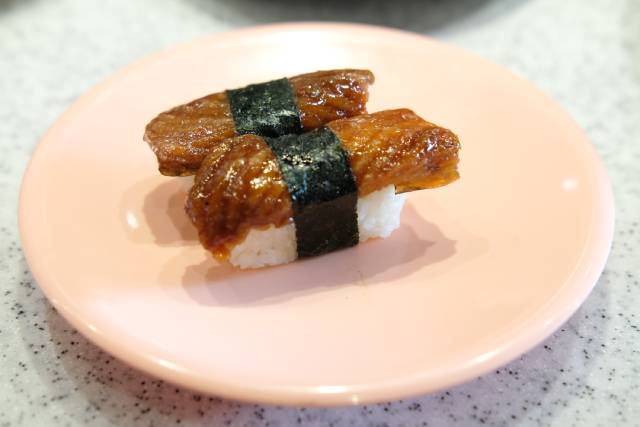
How do people around the world eat eel?
Here is a summary of some of the most popular eel dishes and products.
Unagi Sushi
Eel sushi is a popular Japanese dish that involves placing a piece of grilled and marinated eel on top of a bed of rice, with a strip of dried seaweed holding the two together.
According to USDA data, here are the basic nutritional values for one piece of eel sushi (27):
- Calories: 50 kcal
- Carbohydrate: 4.7 g
- Fat: 1.8 g
- Protein: 3.2 g
Marinated Grilled Eel
In Japan and South Korea, a grilled and then marinated eel dish is extremely popular.
After marinating a fresh fillet of eel with a sweet soy sauce-based marinade, the fish is grilled until slightly crisp.
This dish may be served alone or on top of a bed of rice in a bowl, which is known as unadon.
Unadon is a traditional Japanese dish, and there is a recipe for it here.
Jellied Eels
While not so popular with younger generations, ‘jellied eel’ is a traditional British dish that involves boiling eel with several seasonings and then leaving the mixture to cool and set.
Once set, the dish resembles jelly with pieces of eel inside.
Final Thoughts
Eel is a tasty type of seafood that offers a wealth of nutritional value.
The fish is extremely rich in vitamins A, D, and B12, and it offers good amounts of protein and omega-3.
However, legitimate concerns surround the sustainability of the fish.
Ideally, choosing certified sustainable eel may help contribute to replenishing eel reserves.

